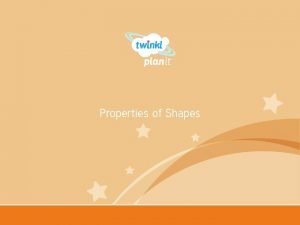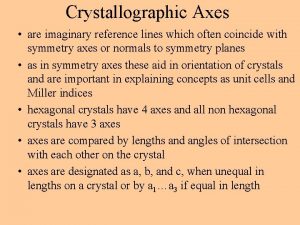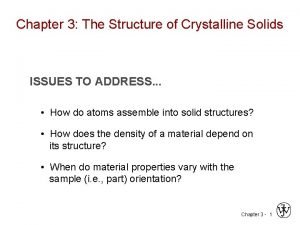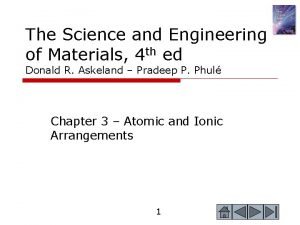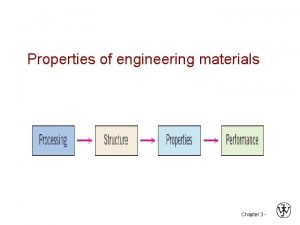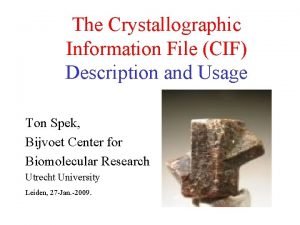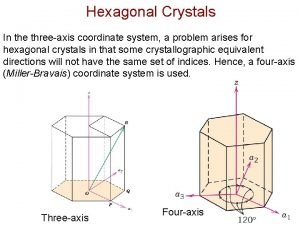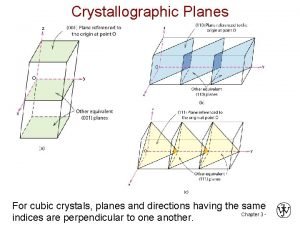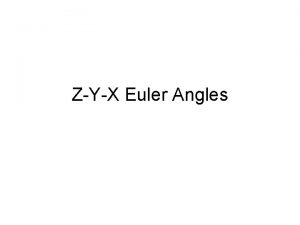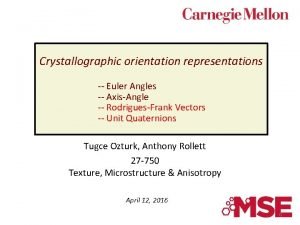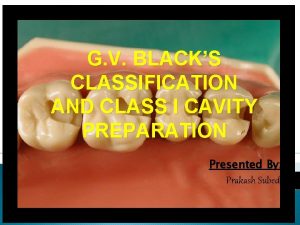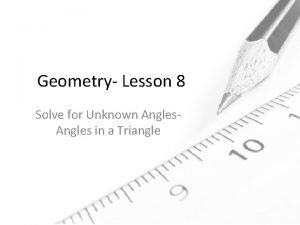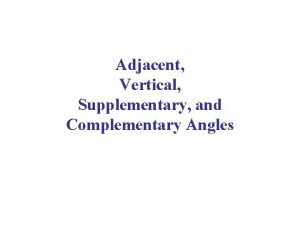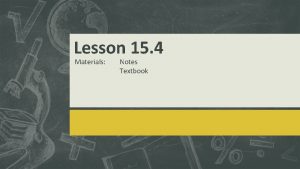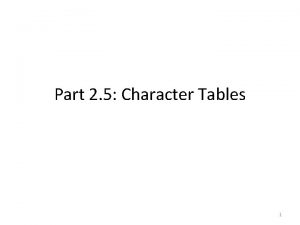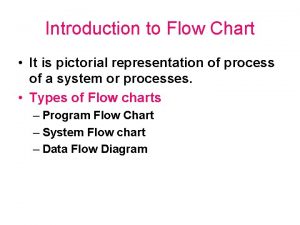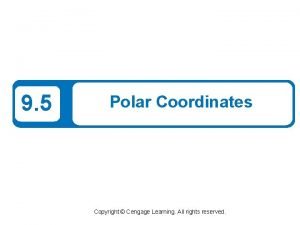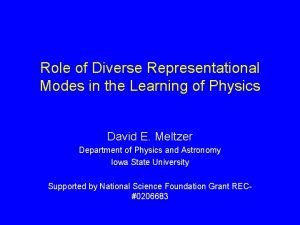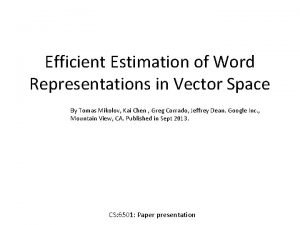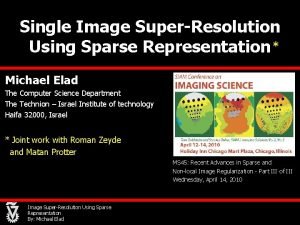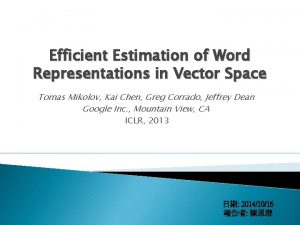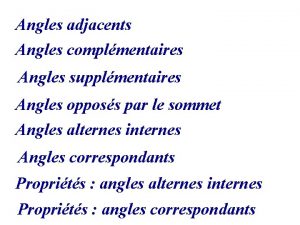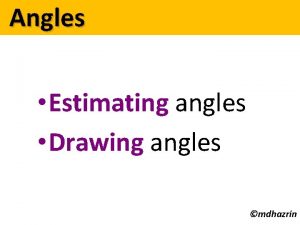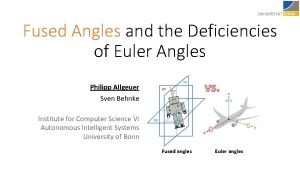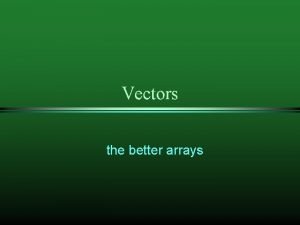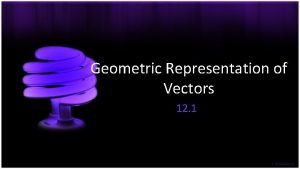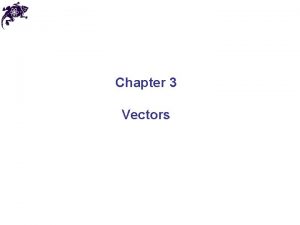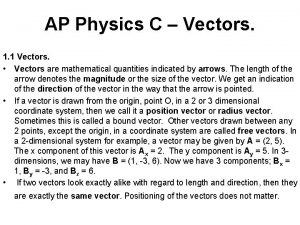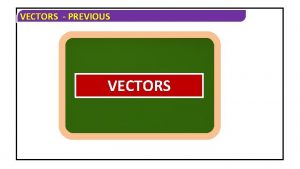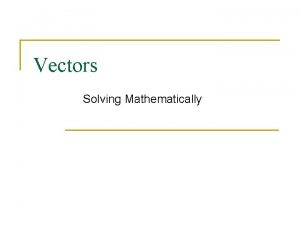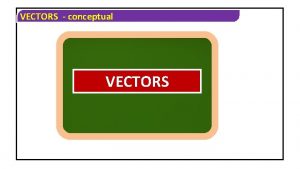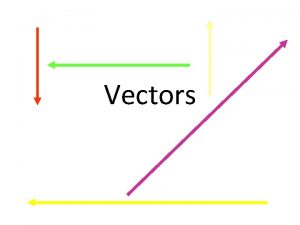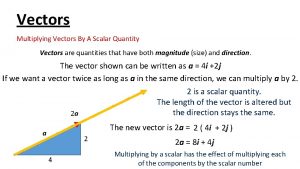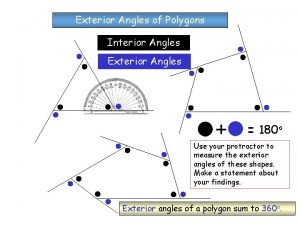Crystallographic orientation representations Euler Angles AxisAngle RodriguesFrank Vectors







![Rotation matrices from Miller indices [uvw] RD [100] direction [010] direction [001] direction TD Rotation matrices from Miller indices [uvw] RD [100] direction [010] direction [001] direction TD](https://slidetodoc.com/presentation_image_h/deffeb580412c569900e1223aca3e808/image-8.jpg)





















- Slides: 29

Crystallographic orientation representations -- Euler Angles -- Axis-Angle -- Rodrigues-Frank Vectors -- Unit Quaternions Tugce Ozturk, Anthony Rollett 27 -750 Texture, Microstructure & Anisotropy April 12, 2016 0

Lecture Objectives • Brief review on the challenges of describing crystallographic orientations • Review of previously studied orientation representations: rotation matrices and Euler angles • Introduction of Rodrigues-Frank vectors • Introduction of unit quaternions • Useful math for using quaternions as rotation operators • Conversions between Euler angles, axis-angle pairs, RF vectors, and quaternions 1

Why can it get challenging to work with crystallographic orientations? • Orientation is specified based on reference frames Sample coordinates Crystal coordinates Lab coordinates • Different choices of axes to convert crystal frames • Hexagonal frame into orthonormal frame – X= Y= Z= or X= Y= Z= • Personal experiences? 2

Descriptors of orientation Orientation matrix Miller indices Pole Figure Inverse PF Euler angles Euler space ODF and m. ODF Misorientation matrix Axis/angle pair Axis/angle space ODF and m. ODF Rodrigues Vectors Rodrigues space ODF and m. ODF Unit Quaternions Quaternion space (4 D) ODF and m. ODF Computational 3 efficiency

Crystal Orientation: Rotation (direction cosine) Matrices • Crystallographic orientation is the position of crystal system with respect to the specimen coordinate system. • A single rotation can be described by a rotation axis and an angular offset about the axis. – Passive rotation: Rotation of axes, sample coordinate into crystal coordinate. – Active rotation: Rotation of the object, crystal coordinate into sample coordinate. vs. • 3 x 3 rotation matrices, R, left-multiply column vectors • Properties: – R-1 = RT and det (R) = 1 – Rows and columns are unit vectors, and the cross product of two rows or columns gives the third. 4

Crystal Orientation: Miller Indices Notation • Three orthogonal directions chosen as the reference frame • All directions can then be described as linear combinations of the three unit direction vectors. • Most straightforward in orthonormal systems, e. g. cubic, as indices for plane and direction are identical. • In many cases we use the metallurgical names Rolling Direction (RD) // x, Transverse Direction (TD) // y, and Normal Direction (ND) // z. • We then identify a plane normal parallel to 3 rd axis (ND) and a crystal direction parallel to the 1 st axis (RD), written as (hkl)[uvw]. ≡Z (hkl) ∕ ∕ Z ≡Y ≡X [uvw] ∕ ∕ X 5

Crystal Orientation: Euler Angles • Euler showed three sequential rotations about different axes can describe orientations (18 th century) • • Passive rotation (SCoord into CCoord) There are 12 different possible axis-angle sequences. The “standard” sequence varies from field to field. Multiple conventions – Proper Euler angles (z-x-z, x-y-x, y-z-y, z-y-z, x-z-x, y-x-y) – Tait–Bryan angles (x-y-z, y-z-x, z-x-y, x-z-y, z-y-x, y-x-z) • We use the Bunge convention. – First angle 1 about ND – Second angle about new RD – Third angle 2 about newest ND • Sample symmetry effects the size of Euler space – Most general, triclinic crystal system, no sample symmetry 0 1, 2 360 0 180 – Cubic crystal system, rolled sample (orthonormal sample symmetry) 0 1, 2 90 6
![Rotation matrices from Miller indices uvw RD 100 direction 010 direction 001 direction TD Rotation matrices from Miller indices [uvw] RD [100] direction [010] direction [001] direction TD](https://slidetodoc.com/presentation_image_h/deffeb580412c569900e1223aca3e808/image-8.jpg)
Rotation matrices from Miller indices [uvw] RD [100] direction [010] direction [001] direction TD ND (hkl) Rows are the direction cosines for [100], [010], and [001] in the sample coordinate system, columns are the direction cosines (i. e. hkl or uvw) for the RD, TD and ND in the crystal coordinate system. Challenge: With Miller indices, we define the closest family (can be degrees away) 7

Rotation matrices from Bunge Euler angles Combine the 3 rotations via matrix multiplication; 1 st on the right, last on the left: [uvw] (hkl) A = Z 2 XZ 1 = 8

Miller indices from Bunge Euler angles • Compare the indices matrix from slide 6 with the Euler angle matrix from slide 8. n, n’ = factors to make integers towards the closest family 9

Bunge Euler angles from rotation matrices Notes: The range of inverse cosine (ACOS) is 0 -π, which is sufficient for ; from this, sin( ) can be obtained; The range of inverse tangent is 0 -2π, (must use the ATAN 2 function) which is required for calculating 1 and 2. 10

Bunge Euler angles from miller indices Caution: when one uses the inverse trig functions, the range of result is limited to 0°≤cos-1 ≤ 180°, or -90°≤sin-1 ≤ 90°. Thus it is not possible to access the full 0 -360° range of the angles. It is more reliable to go from Miller indices to an orientation matrix, and then calculate the Euler angles. Extra credit: show that the following surmise is correct. If a plane, hkl, is chosen in the lower hemisphere, l<0, show that 11 the Euler angles are incorrect.

Crystal Orientation: Axis-angle Pair • Axis-angle pair is defined such that the crystal frame and the sample frame is overlapped by a single rotation, θ, along a common axis [u v w]. • Commonly written as ( , q) or (n, w) • Active rotation • The rotation can be converted to a matrix (passive rotation) • Common in misorientation representation - Difference of misorientation vs. rotation difference is the choice of reference axis • Easy conversion into Rodrigues-Frank vectors 12

Rotation matrices from Axis-angle For( , q) or (n, w) This form of the rotation matrix is a passive rotation, appropriate to axis transformations 13

Axis-Angle from Rotation matrices Rotation axis, n: Note the order (very important) of the coefficients in each subtraction; again, if the matrix represents an active rotation, then the sign is inverted. Rotation angle, θ: therefore, cos = 0. 5 (trace(a) – 1). 14

Crystal Orientation: Rodrigues-Frank Vectors • Rodrigues vectors were popularized by Frank [“Orientation mapping. ” Metall. Trans. 19 A: 403 -408 (1988)], hence the term Rodrigues-Frank space • Easily converted from axis-angle • Most useful for representation of misorientations, also useful for orientations The RF representation from axis angle R(r, α ) scales r by the tangent of α/2 Note semi-angle 15

Rodrigues-Frank Space • • • Population of vectors Smallest R results from the smallest θ, and it lies closest to the origin of the RF space Lines in RF space represent rotation about fixed axis Further, when the RF space is divided into subvolumes, the misorientations that lie on the boundary of the subvolume are geometrically special, by having a low index axis of misorientation. As the Rodrigues vector is so closely linked to the rotation axis, which is meaningful for the crystallography of grain boundaries, the RF representation of misorientations is very common. Cubic crystal symmetry no sample symmetry Cubic orthorhombic Cubic cubic 16

R-F Vector from Rotation matrices • Simple formula, due to Morawiec: Trace of a matrix: tr(a) = a 11 + a 22 + a 33 17

R-F Vector from Bunge Euler angles and Bunge Euler from R-F vectors § § tan α √ cos 1 – r 1 = tan( /2) [cos{( 1 - 2)/2}/cos{( 1 + 2)/2}] r 2 = tan( /2) [sin{( 1 - 2)/2}/[cos{( 1 + 2)/2}] r 3 = tan{( 1 + 2)/2} P. Neumann (1991). “Representation of orientations of symmetrical objects by Rodrigues vectors. ” Textures and Microstructures 14 -18: 53 -58. Conversion from Rodrigues to Bunge Euler angles: sum = atan(R 3) ; diff = atan ( R 2/R 1 ) f 1 = sum + diff; F = 2. * atan(R 2 * cos(sum) / sin(diff) ); f 2 = sum - diff 18

Rotation matrix from R-F vectors • Due to Morawiec: Example for the 12 entry: NB. Morawiec’s Eq. on p. 22 has a minus sign in front of the last term; this will give an active rotation matrix, rather than the passive rotation matrix seen here. 19

Crystal Orientation: Unit Quaternions What is a quaternion? A quaternion (1843 by Hamilton) is an ordered set of four real numbers q 0, q 1, q 2, and q 4. Here, i, j, k are the familiar unit vectors that correspond to the x-, y-, and z-axes, resp. Scalar part Vector part [1] Quaternion multiplication is non-commutative (pq≠qp) [2] An extension to 2 D complex numbers [3] Of the 4 components, one is a ‘real’ scalar number, and the other 3 form a vector in imaginary ijk space! 20

Quaternions as rotations • A quaternion can represent a rotation by an angle θ around a unit axis n= (x y z): • Checking the magnitude of the quaternion, Unit! 21

Unit Quaternion from Rotation Matrices Formulae, due to Morawiec: Note: passive rotation/ axis transformation (axis changes sign for active rotation) Note the coordination of choice of sign! 22

Rotation Matrices from Unit Quaternions For Orientation matrix: g= Quaternions are • Computationally efficient – multiplication requires fewer computations • Axis-angle and R-F into quaternion conversion is simple 23

Rotation of a vector by a quaternion Passive rotation Active rotation Rotation axis: Consider rotating the vector i by an angle of α = 2π/3 about the <111> direction. k j For an active rotation: i For a passive rotation: 24

References § § § § § Frank, F. (1988). “Orientation mapping, ” Metallurgical Transactions 19 A: 403 -408. P. Neumann (1991). “Representation of orientations of symmetrical objects by Rodrigues vectors. ” Textures and Microstructures 14 -18: 53 -58. Takahashi Y, Miyazawa K, Mori M, Ishida Y. (1986). “Quaternion representation of the orientation relationship and its application to grain boundary problems. ” JIMIS-4, pp. 345 -52. Minakami, Japan: Trans. Japan Inst. Metals. (1 st reference to quaternions to describe grain boundaries). A. Sutton and R. Balluffi (1996), Interfaces in Crystalline Materials, Oxford. V. Randle & O. Engler (2010). Texture Analysis: Macrotexture, Microtexture & Orientation Mapping. Amsterdam, Holland, Gordon & Breach. S. Altmann (2005 - reissue by Dover), Rotations, Quaternions and Double Groups, Oxford. A. Morawiec (2003), Orientations and Rotations, Springer (Europe). “On a New Species of Imaginary Quantities Connected with a Theory of Quaternions”, by William Rowan Hamilton, Proceedings of the Royal Irish Academy, 2 (1844), 424– 434. “Des lois géométriques qui régissent les déplacements d’un système solide dans l’espace et de la variation des coordonnées provenant de ces déplacements considérées indépendamment des causes qui peuvent les produire”, M. Olinde Rodrigues, Journal des Mathématiques Pures et Appliquées, 5 380 -440. 25

Properties of Quaternions Magnitude of a quaternion: Conjugate of a quaternion: Addition of quaternions: Product of two arbitrary quaternions Scalar part Using more compact notation: again, note the + in front of the vector product On a New Species of Imaginary Quantities Connected with a Theory of Quaternions, by William Rowan Hamilton, Proceedings of the Royal Irish Academy, 2 (1844), 424– 434. Vector part 26

Cubic Crystal Symmetry Operators The numerical values of these symmetry operators can be found at: http: //pajarito. materials. cmu. edu/rollett/texture_subroutines: quat. cubic. symm etc. 27

Combining Rotations as RF vectors • Two Rodrigues vectors combine to form a third, r. C, as follows, where r. B follows after r. A. Note that this is not the parallelogram law for vectors! r. C = (r. A, r. B) = {r. A + r. B - r. A x r. B}/{1 - r. A • r. B} addition vector product scalar product 28
 Vertical angles are
Vertical angles are Euler
Euler Euler path vs circuit
Euler path vs circuit Crystallographic axes and axial ratio
Crystallographic axes and axial ratio Vmse crystallographic planes exercises
Vmse crystallographic planes exercises Significance of lattice point
Significance of lattice point Crystallographic directions
Crystallographic directions Ljkkfh cif
Ljkkfh cif Hexagonal coordinate system
Hexagonal coordinate system Miller-bravais indices
Miller-bravais indices Crystallographic planes
Crystallographic planes Zyx euler
Zyx euler Bunge euler angles
Bunge euler angles Difference between ethnocentric and polycentric orientation
Difference between ethnocentric and polycentric orientation Gv black cavity classification
Gv black cavity classification Lesson 8 solve for unknown angles
Lesson 8 solve for unknown angles A pair of adjacent complementary angles
A pair of adjacent complementary angles Module 15 angles and segments in circles answer key
Module 15 angles and segments in circles answer key Dinfh character table
Dinfh character table Floor plans maths lit grade 11
Floor plans maths lit grade 11 Flow chart is pictorial representation of
Flow chart is pictorial representation of Example of time pattern organizer
Example of time pattern organizer Multiple representations of polar coordinates
Multiple representations of polar coordinates Multiple representations
Multiple representations Efficient estimation of word representations
Efficient estimation of word representations On single image scale-up using sparse-representations
On single image scale-up using sparse-representations Strip map mathematical literacy
Strip map mathematical literacy Mathematical literacy grade 11 questions and answers
Mathematical literacy grade 11 questions and answers Efficient estimation of word representation in vector space
Efficient estimation of word representation in vector space Unit 1: media representations mark scheme
Unit 1: media representations mark scheme
